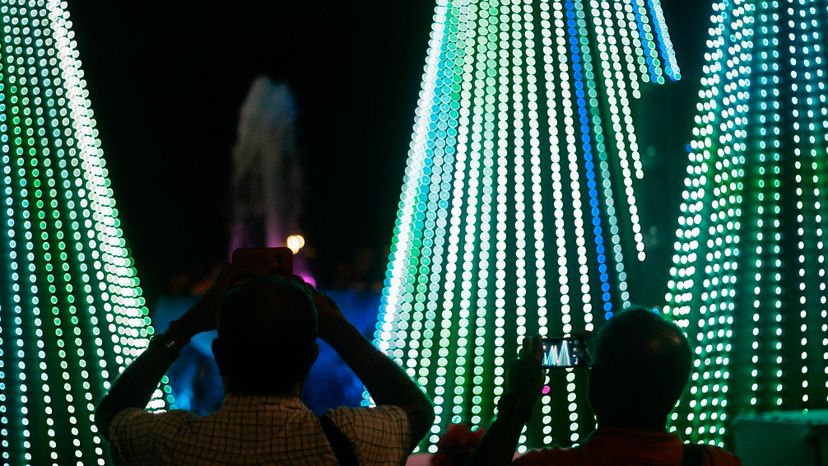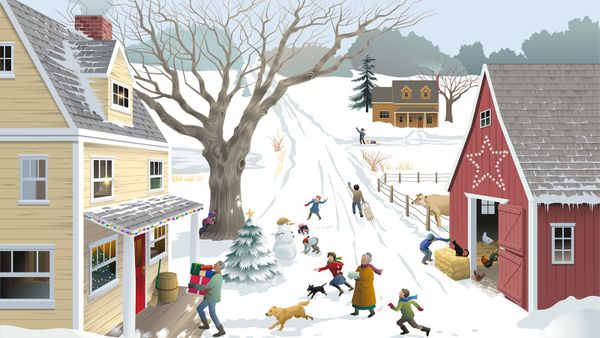Christmas Traditions in Mexico

The weather is warm and mild in Mexico during the Christmas season. Families shop for gifts, ornaments, and good things to eat in the market stalls, called puestos. They decorate their homes with lilies and evergreens. Family members cut intricate designs in brown paper bags to make lanterns called farolitos. They place a candle inside and then set the farolitos along sidewalks, on windowsills, and on rooftops and outdoor walls to illuminate the community with the spirit of Christmas.
The Mexican celebration of Christmas is called las posadas and begins on December 16. The ninth evening of las posadas is Buena Noche, Christmas Eve. The children lead a procession to the church and place a figure of the Christ Child in the nacimiento or nativity scene there. Then everyone attends midnight mass.
Advertisement
After mass, the church bells ring out and fireworks light up the skies. Many Mexican children receive gifts from Santa Claus on this night. The children help to set up the family's nacimiento in the best room in the house. The scene includes a little hillside, the stable, and painted clay figures of the Holy Family, shepherds, the Three Kings, and animals. The children bring moss, rocks, and flowers to complete the scene.
Families begin the nine-day observance of las posadas by reenacting the Holy Family's nine-day journey to Bethlehem and their search for shelter in a posada, or inn. In some parts of Mexico, for the first eight evenings of las posadas two costumed children carry small statues of Mary and Joseph as they lead a candlelight procession of friends and neighbors from house to house. They sing a song asking for shelter for the weary travelers. When at last they find a family that will give shelter, the children say a prayer of thanks and place the figures of Mary and Joseph in the family's nacimiento. Then everyone enjoys a feast at the home of one of the participants.
For the children, the pinata party on the first eight evenings is the best part of las posadas. The pinata is a large clay or papier-mache figure shaped like a star, an animal, or some other object and covered with colorful paper streamers. The pinata is filled with candy or small gifts and hung from the ceiling. The blindfolded children are spun around and given a big stick.
They take turns trying to break open the pinata with the stick while the pinata is raised and lowered. Everybody scrambles for the gifts and treats when the pinata shatters and spills its treasure.
Christmas Day is a time for church and family. After church services, Christmas dinner begins with oxtail soup with beans and hot chili, followed by roasted turkey and a special salad of fresh fruits and vegetables.
Many children receive gifts on the eve of Twelfth Night, January 5, from the Reyes Magos, the Three Kings who pass through on their way to Bethlehem. Children leave their shoes on the windowsill and find them filled with gifts the next morning. At a special Twelfth Night supper on January 6, families and friends enjoy hot chocolate flavored with vanilla and cinnamon, and a ring-shaped cake. Whoever gets the slice of cake containing a tiny figure of a baby will give a tamale party on February 2, Candlemas Day.
The whole family helps to prepare the tamales, which are a meat or chicken filling wrapped in corn dough. The tamale is then wrapped in corn husks and steamed. A religious service held on Candlemas marks the end of the Christmas season in Mexico.

